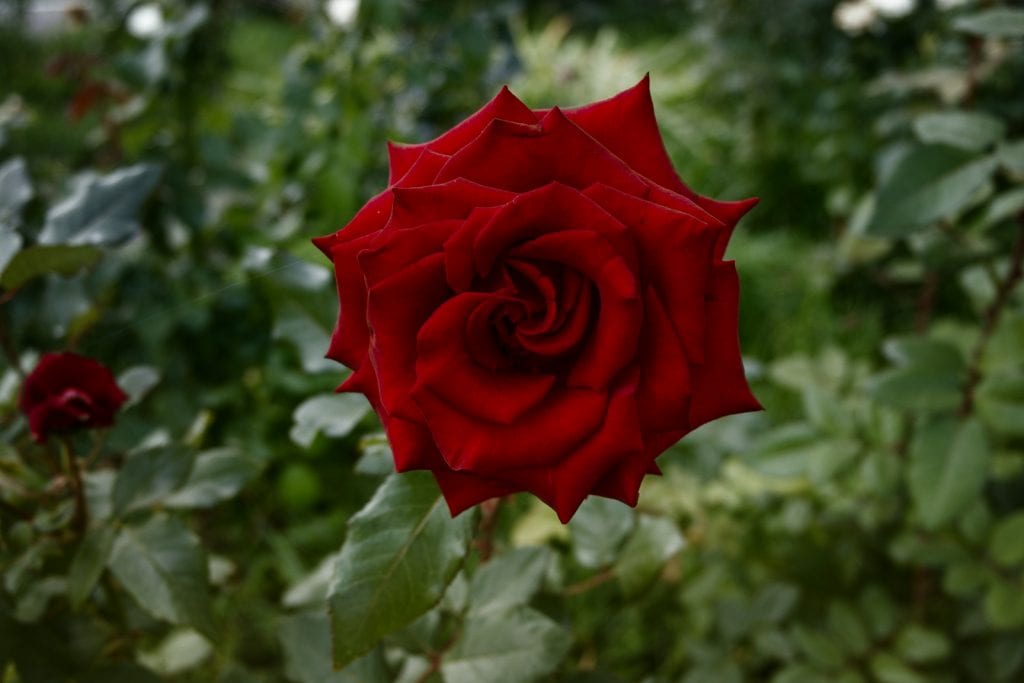Top Tips for Rose Bush Care for Newbies

Growing roses isn’t as hard as you would assume; everyone can do it. Plant your roses in a well-drained, sunny spot. For striking blossoms, fertilize them often. To keep the soil wet, water them equally. In the early spring, trim back existing rose bushes. Watch for illnesses like powdery mildew or black spot.
If you’ve been frightened to establish a rose garden, the reality is, roses are no more difficult to care for than other blooming bushes. To understand how to cultivate roses, abide by these top strategic guidelines:
Start Off From The Roots
Roses may be purchased as dormant bare-root plants or already potted in soil. Every kind has advantages of its own:
Roses in containers: Because container roses are fast to establish and are simple to plant, they are an excellent choice for inexperienced gardeners. Throughout the growing season, they are also available for purchase from neighborhood nurseries. This enables you to plant them on days with the best climate, ideally ones that are gloomy and chilly.
Roses with bare roots: The availability of a wider variety of bare-root roses is one of its benefits. They may also be acquired online and are reasonably priced. But before planting, bare-root plants need an overnight soak in water, unlike container roses. Additionally, during the first several months after planting, the roots need to be maintained wet.
Rose Roots And Bare Root Rose
The largest variety of roses are available when planting bare-root plants, which come dormant and need extra care in the months that follow.
Roses may be divided into several groups, from groundcovers to climbing roses, and from micro-miniatures to grandifloras. Some classes include hundreds of different types. Although it might be tempting to pack your rose garden with a broad variety of plants, you’ll probably wind up with an unorganized arrangement and too many plants for the available area. You’ll be happier with a few well selected kinds than with dozens of mismatched, incoherent plants.
Consider shrub or landscape roses, such as the Oso Easy series, for a lower maintenance rose garden. Reducing the number of rose types, you cultivate will assist you in preventing an unkempt and mismatched arrangement.
Figure Out The Ideal Site For Growing
Rose bushes need six to eight hours of sunshine every day for the healthiest plants and the greatest display of blossoms. Additionally, they need to be planted in organic matter-rich, well-drained soil. Roses thrive best in areas with high temperatures when shielded from the sweltering afternoon heat. Planting a rose shrub near to a wall or fence that faces west or south helps reduce winter frost damage in cold locations.
Choose The Appropriate Time
The optimum times to plant roses are in the autumn, at least six weeks before your typical first frost date, or in the spring, after the final frost. When autumn planting is done early enough, the roots have time to get entrenched before the plants hibernate for the winter.
Roses that are bare root should be planted as soon as you get them home since they are usually only accessible in the early spring. When buying roses in pots, you have greater planting time freedom.
Plant Appropriately
Your container or bare-root roses will thrive if you plant them correctly from the beginning. For the roots of the plant to be accommodated, the planting hole must be both deep and broad enough. Because roses dislike having their feet wet, the space must have enough drainage.
The dirt taken from the planting hole should be well mixed with garden compost, peat moss, or other organic materials. After filling the planting hole with a portion of this mixture, put the rose shrub there. In temperate areas, the plant’s crown should be at ground level; in colder climates, it should be two to three inches below the surface.
After using a soil combination to partly fill the hole, apply a slow-release fertilizer. After giving the hole a good watering, fill it up with the leftover dirt. Reapply water, and then pile loose dirt around the stems to shield the rose from the elements while it gets used to its new location. When planting several rose bushes together, give them a minimum of 3 feet between each other to provide sufficient space for growth as the plants become older.
Fertilize Regularly
Regular fertilization is necessary for a rose shrub to produce an eye-catching floral display. Nutrients are produced gradually and steadily using organic ways. Compost, composted manure, and other natural and organic fertilizers (such this organic fish emulsion) used once a month are effective. Additionally, organic additions support the growth of advantageous soil bacteria and a pH equilibrium in the soil.
Jobe’s Organic Fertilizer Spikes and other slow-release fertilizers provide the ideal ratio of nitrogen, phosphorous, potassium, and other small nutrients. They also provide rose bushes with the nutrition they need for healthy development.
When planting bare-root plants, include organic soil amendments into the planting mix. To avoid scorching the newly formed roots, do not apply full-strength fertilizers until the plant has produced its first flowers.
Use Water Carefully
Throughout the growth season, the soil should be maintained consistently wet. Your soil type and climate will determine how much and how often you need to water it. During the growth season, roses thrive with the equivalent of one inch of rainfall every week. More watering is required for roses growing in sandy soils than for those in heavy clay soils. Roses will also soon dry out in hot, dry, windy weather.
Watering technique matters just as much as frequency. Don’t water the leaves of roses to maintain their health. Use a watering wand aimed straight at the soil, a soaker hose, or a watering can with a long spout.
